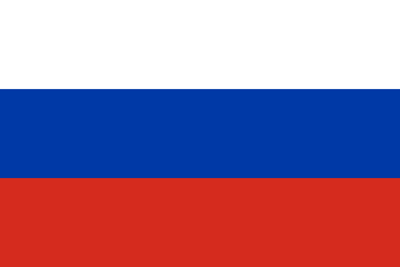Nicht-invasive Gehirnstimulationstechniken, wie transkranielle Gleichstromstimulation (tDCS) und transkranielle magnetische Stimulation (rTMS), haben in den letzten Jahren zunehmend an Bedeutung gewonnen, insbesondere im Bereich der Neurowissenschaften und der neuropsychologischen Rehabilitation. Diese Methoden bieten eine vielversprechende Möglichkeit, die neuronale Plastizität zu fördern und die Heilung von kognitiven und sprachlichen Defiziten nach einem Schlaganfall zu unterstützen. Studien haben gezeigt, dass diese Verfahren positive Effekte auf verschiedene kognitive Funktionen, einschließlich Gedächtnis, Sprache und motorische Fähigkeiten, haben können.
Ein wesentliches Prinzip hinter diesen Technologien ist ihre Fähigkeit, die Gehirnaktivität gezielt zu modulieren. Die transkranielle Wechselstromstimulation (tACS) etwa, bei der schwache elektrische Ströme durch die Kopfhaut geleitet werden, hat sich als vielversprechend für die Beeinflussung von Hirnwellenaktivitäten erwiesen. Diese Methode kann die Kommunikation zwischen verschiedenen Hirnregionen verbessern und so die kognitive Leistung steigern. Besonders interessant ist dabei, dass tACS nicht nur die allgemeine Gehirnaktivität beeinflusst, sondern auch spezifische Netzwerke im Gehirn, die mit Gedächtnis, Aufmerksamkeit und Sprache verbunden sind.
Die Anwendung von tDCS und rTMS in der Sprachtherapie hat sich insbesondere bei Patienten mit Aphasie als vorteilhaft erwiesen. Aphasie, eine Sprachstörung, die häufig nach einem Schlaganfall auftritt, beeinträchtigt die Fähigkeit, Sprache zu verstehen oder zu produzieren. Wiederholte transkranielle Magnetstimulation (rTMS) hat gezeigt, dass sie die Sprachwiederherstellung bei Patienten mit chronischer Aphasie signifikant verbessern kann. Hierbei wird rTMS verwendet, um gezielt Gehirnregionen zu stimulieren, die mit der Sprachproduktion in Verbindung stehen, und dadurch eine funktionelle Reorganisation des Gehirns zu fördern. In einigen Studien wurde die stimulierte Hirnregion als der präfrontale Kortex identifiziert, ein Bereich, der für die sprachliche Verarbeitung von entscheidender Bedeutung ist.
Auch die transkranielle direkte Gleichstromstimulation (tDCS) hat sich als nützlich erwiesen, um die sprachliche Leistungsfähigkeit zu verbessern. Eine Kombination aus tDCS und Sprachtherapie hat positive Auswirkungen auf die Wiederherstellung der Sprachfunktionen gezeigt, insbesondere in der frühen Phase der Rehabilitation. Es gibt auch Hinweise darauf, dass tDCS in Kombination mit intensiven Sprachübungen zu einer schnelleren Verbesserung der Sprachfähigkeiten führt, indem es die neuronale Aktivität im Sprachnetzwerk des Gehirns verstärkt.
Ein weiterer wichtiger Aspekt dieser nicht-invasiven Techniken ist ihre Fähigkeit, die interhemisphärische Plastizität zu fördern. Nach einem Schlaganfall kann die betroffene Gehirnhälfte in ihrer Funktion eingeschränkt sein, während die gesunde Gehirnhälfte möglicherweise zusätzliche Aufgaben übernehmen muss. Durch die Anwendung von rTMS oder tDCS kann diese interhemisphärische Kommunikation verstärkt werden, was zur Verbesserung der kognitiven und sprachlichen Funktionen führt.
Es gibt jedoch auch Herausforderungen und offene Fragen im Bereich der nicht-invasiven Gehirnstimulation. Trotz der vielversprechenden Ergebnisse gibt es noch Unsicherheiten bezüglich der besten Stimulationsparameter, wie z. B. der Häufigkeit und Intensität der Stimulation, sowie der optimalen Behandlungsdauer. Auch die Langzeitwirkungen dieser Methoden sind noch nicht vollständig verstanden, was zukünftige Forschungsbemühungen erforderlich macht. Darüber hinaus ist es wichtig zu beachten, dass nicht jeder Patient in gleicher Weise auf diese Behandlungen anspricht. Die Wirksamkeit kann durch Faktoren wie das Alter des Patienten, die Schwere des Schlaganfalls und die Zeit nach dem Ereignis beeinflusst werden.
Darüber hinaus sollten Patienten, die eine solche Behandlung in Erwägung ziehen, immer in enger Zusammenarbeit mit ihren behandelnden Ärzten und Therapeuten entscheiden, ob und wie eine nicht-invasive Gehirnstimulation in ihr Rehabilitationsprogramm integriert werden kann. Der kombinierte Ansatz von Gehirnstimulation und gezielter Therapie hat in vielen Fällen zu positiven Ergebnissen geführt, aber es bleibt wichtig, den individuellen Bedürfnissen jedes Patienten gerecht zu werden.
Es ist ebenfalls von Bedeutung, dass der Einsatz solcher Technologien in einem umfassenden Rehabilitationsplan eingebettet ist, der auch andere therapeutische Ansätze wie Sprachtherapie, physische Rehabilitation und psychologische Unterstützung umfasst. Die nicht-invasive Gehirnstimulation stellt somit nur einen Teil eines komplexen therapeutischen Ansatzes dar, der darauf abzielt, die vollständige Genesung und eine bestmögliche Wiederherstellung der Lebensqualität der Patienten zu unterstützen.
Die Forschung in diesem Bereich ist vielversprechend, aber noch nicht abgeschlossen. Künftige Studien sollten sich darauf konzentrieren, die langfristigen Effekte dieser Technologien zu untersuchen, die optimalen Stimulationsparameter zu bestimmen und zu verstehen, wie diese Methoden am besten in die klinische Praxis integriert werden können. Der Fortschritt in diesem Gebiet könnte dazu beitragen, neue Wege zur Unterstützung von Schlaganfallpatienten mit kognitiven und sprachlichen Beeinträchtigungen zu eröffnen und die Lebensqualität der Betroffenen erheblich zu verbessern.
Neuromodulation in Stroke Rehabilitation: Mechanisms and Translational Implications
Neuromodulation therapies, especially those involving non-invasive techniques like repetitive transcranial magnetic stimulation (rTMS) and transcranial direct current stimulation (tDCS), have gained significant attention in recent years as potential treatments for stroke rehabilitation. These therapies aim to modify cortical excitability and promote neural plasticity, which is essential for recovery following neurological injuries such as ischemic strokes. Understanding the mechanisms underlying these therapies is crucial to their successful application and their integration into clinical practice.
The effectiveness of neuromodulation in stroke rehabilitation relies on the principle of cortical plasticity. After a stroke, the brain’s ability to reorganize itself and form new connections is often impaired, but it can be enhanced by specific types of stimulation. Techniques like rTMS and tDCS have been shown to influence this plasticity by modulating the excitability of the motor cortex. For instance, low-frequency rTMS can decrease motor cortex excitability, which may be useful in certain rehabilitation settings, such as after a stroke where there is hyperactivity in the affected hemisphere. On the other hand, high-frequency rTMS has been associated with the promotion of motor recovery by enhancing cortical excitability.
Furthermore, studies have demonstrated that the application of these non-invasive techniques can have both short-term and long-term effects on brain activity and function. Specifically, the use of paired associative stimulation, where electrical or magnetic stimuli are applied at specific intervals, can increase motor responses by aligning neural activity across regions of the brain. This process facilitates the reinforcement of synaptic connections that are important for motor function recovery. In animal models of ischemic stroke, repetitive transcranial magnetic stimulation has shown potential in reducing infarct size and promoting the regeneration of damaged neurons, suggesting a beneficial impact on stroke recovery.
The combination of neuromodulation with rehabilitation strategies, such as motor training, has also been investigated for its synergistic effects. It has been observed that non-invasive brain stimulation can augment the plasticity induced by motor learning, thus improving the outcomes of rehabilitation. This synergy is particularly promising because it addresses both the restoration of motor function and the enhancement of the brain’s capacity to reorganize and adapt after injury.
Despite the promising results from pre-clinical and early clinical studies, there are still significant challenges to overcome in optimizing these therapies for widespread clinical use. One of the primary challenges is the variability in response to neuromodulation. Not all patients respond equally to these interventions, and the underlying reasons for this variability remain unclear. Factors such as the timing of stimulation, the frequency of application, and the individual characteristics of the patient—such as the extent of brain injury and the specific areas affected—may all influence the outcome.
Additionally, while these therapies are generally considered safe, the long-term effects of repetitive neuromodulation are not yet fully understood. The potential for adverse effects, especially with repeated application, needs further investigation. Moreover, there is a need for a more refined understanding of the optimal parameters for different patient populations. Clinical guidelines are still being developed to standardize the use of these techniques, and more research is needed to determine the most effective protocols.
As the field of neuromodulation continues to evolve, it is important to consider not only the technical aspects of these therapies but also their broader implications for healthcare systems. Integrating these treatments into routine clinical practice requires addressing logistical challenges, such as the training of healthcare providers and the availability of equipment. Furthermore, there is a need for cost-effectiveness studies to evaluate the feasibility of widespread implementation.
Another critical aspect is the potential for combining neuromodulation with pharmacological treatments. For example, the use of neuromodulation in conjunction with drugs that promote neuroplasticity could enhance the recovery process. Similarly, pharmacological agents that target neurotransmitter systems, such as glutamate or GABA, might be used to complement the effects of brain stimulation, further improving outcomes.
The clinical application of neuromodulation techniques is not limited to stroke rehabilitation. There is growing evidence that these therapies can be beneficial for a range of neurological and psychiatric disorders, including depression, chronic pain, and post-traumatic stress disorder (PTSD). The cross-disciplinary potential of neuromodulation makes it an exciting area of research, and its implications extend beyond stroke rehabilitation alone.
For the successful integration of neuromodulation therapies into clinical practice, a multidisciplinary approach is necessary. Collaboration between neurologists, psychologists, physiotherapists, and neurotechnologists is essential for developing tailored interventions that maximize the therapeutic benefits of neuromodulation. In addition, future studies must continue to refine the underlying mechanisms and identify the optimal conditions under which these therapies can be most effective.
While the research is promising, it is important to recognize that neuromodulation is not a one-size-fits-all solution. It is part of a broader rehabilitation strategy that should be individualized to the needs of each patient. Continued advances in our understanding of neuroplasticity, as well as improvements in neuromodulation technology, will likely expand the range of conditions that can benefit from these therapies.
Wie die Marktstruktur und Handelsvolumen die Stabilität von Kryptoassets beeinflussen
Wie man extremistische Gewalt in öffentlichen Versammlungen effektiv bekämpft: Strategien der Strafverfolgung
Was machte Pachakuteq zum wahren Begründer des Inkareiches?

 Deutsch
Deutsch
 Francais
Francais
 Nederlands
Nederlands
 Svenska
Svenska
 Norsk
Norsk
 Dansk
Dansk
 Suomi
Suomi
 Espanol
Espanol
 Italiano
Italiano
 Portugues
Portugues
 Magyar
Magyar
 Polski
Polski
 Cestina
Cestina
 Русский
Русский